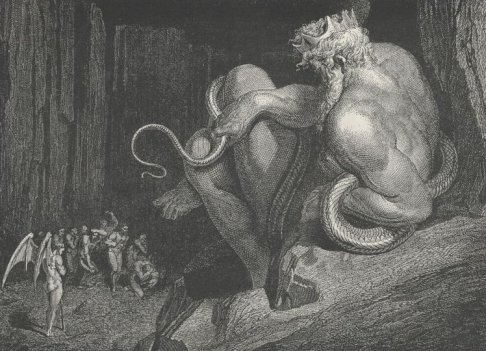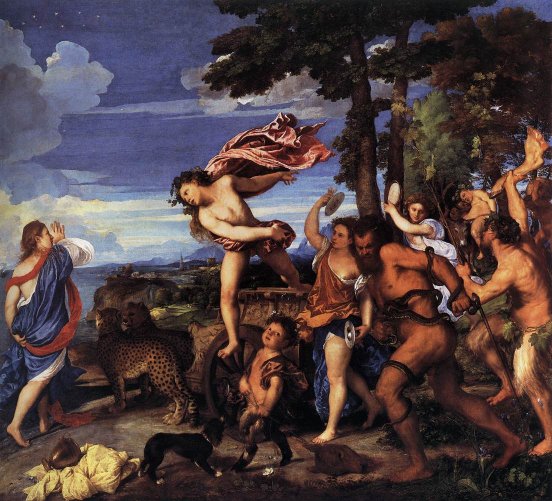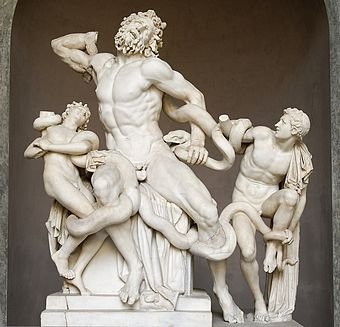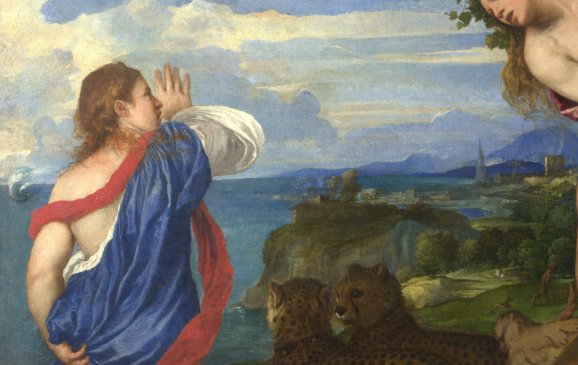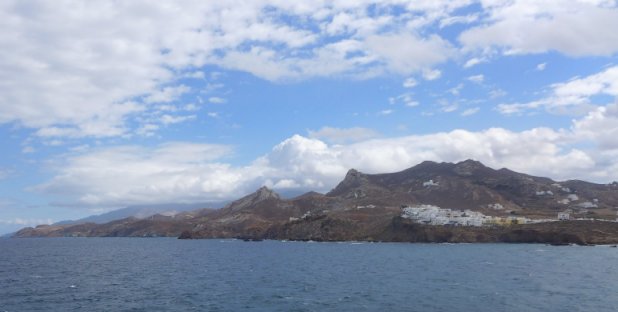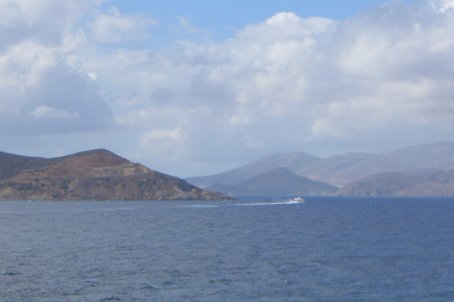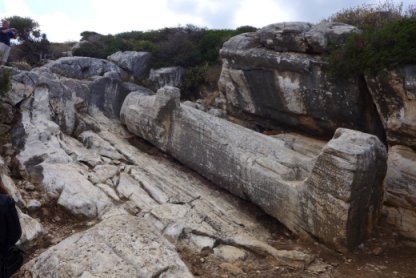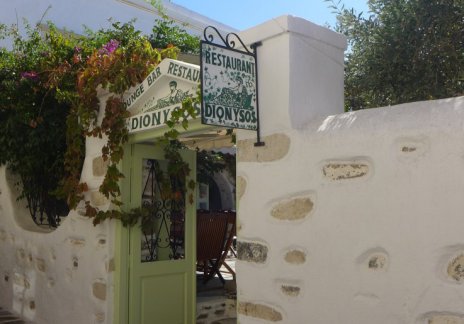|
Bacchus and Ariadne |
|
| Some years
ago an educational publisher asked me to write a short version of the
story of Theseus and the Minotaur for children. I'd always liked the
story, but this gave me a chance to get to grips with
it. One thing I realised at the time was what a seminal story it
is.
It has all the elements of a great narrative: a hero
(Theseus), a villain (the evil emperor Minos), an impossible task to
undertake (defeating the Minotaur), a helpful sidekick (Ariadne), an
unexpected turn in the story (Theseus ends up dumping Ariadne) and a twist
at the end (Theseus's triumph turns to tragedy when he discovers that his
own thoughtlessness has brought about the death of his father (Aegeus). |
|
|
|
|
Back to Earth. One of the National Gallery's greatest paintings is Titian's Bacchus and Ariadne. |
|
|
|
|
| Much has been
written about the commission by Alfonso
d'Este, the Duke of Ferrara. Oligarchs in those days preferred
commissioning great art rather than simply buying up existing paintings
at ridiculous prices (or worse, investing in dodgy football clubs). Many
of the items in the picture, the cheetahs for example, supposedly
belonged to Alfonso: a cheetah or two was de rigueur in sixteenth
century Italy. There are other references - the figure trying to escape
from a snake is probably based on the Laocoön statue discovered in Rome
in 1506, just a few years before Titian started work on the painting.
The main sources of the legend for artists are poems by Catullus and Ovid.
The Ovid version is rather good; Catullus is rather tedious. This is the
key extract from Catullus, though Titian tweaked it a little: ' youthful Bacchus wandering with the rout of satyrs and the sileni, children of Nysa, looking for you Ariadne…some waving thyrsi….some tossing about the limbs of a mangled steer, some girding themselves with mangled serpents...others beating timbrels with raised hands or clashing with round brass cymbals’. A thyrsus is 'a staff tipped with a pine cone and sometimes twined with ivy leaves, borne by Dionysus and his votaries' (on-line dictionary). Nysa was the mythical birthplace of Bacchus/Dionysus: Dionysus means 'born at Nysa. Silenus is the fat guy about to fall off his donkey; apparently 'silenus' means 'moving to and fro', a good definition for a habitual drunk. One of Titian's tweaks is the ring of stars above Ariadne; Dionysus made her a goddess, and this is her constellation. |
|
|
|
|
| To
me, it's the action of the painting that makes it so exciting. It's a
freeze frame moment, with the love-struck Bacchus leaping from his
chariot. Bacchus and his weird crew move from right to left, so reading
the painting in the usual left to right manner means that he is leaping
at us as well as at Ariadne. Now, why have I gone for this theme? It's not religious art in the usually accepted sense, though Bacchus, as god of wine, seems a pretty good god to me. In September of 2013 we took a holiday on the Greek islands of Santorini, Paros - and Naxos. The present capital, Chora, is supposedly the place where Theseus abandoned Ariadne and Bacchus found her. At the time the picture was painted Naxos was under Venetian control; the Venetian fort is still impressively in evidence. I assume, though, that Titian never went there. I was intrigued to find out how close his imagination came to reality. You decide! |
|
|
|
|
|
|
|
One thing we learnt quite early on is that, on Naxos, it's not Bacchus but Dionysus. Yes, it's the same god, but Bacchus isn't just a Roman name; 'Bacchus' was a Greek alternative, meaning 'frenzy'. Dionysus is still an important character in the islands. On the left below is the huge unfinished statue to Dionysus at Apollonia on Naxos. A flaw was discovered when working on it, making it unsuitable for a god. An interesting parallel to Michelangelo's first version of the statue of Christ. As you will see from the picture on the right, Dionysus has now given up frenzy and debauchery, and has opened a restaurant on Paros. |
|
|
|
|
Titian's picture is, of course, the end of the story of Theseus and Ariadne. Let's start at the beginning. |
|
